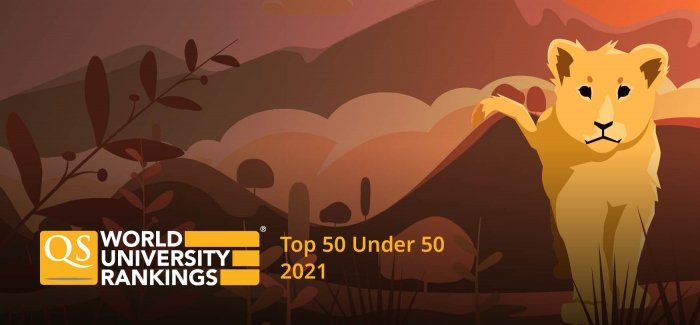Science and technology-focused universities are increasingly making their presence felt in the top 50 of the QS World University Rankings®.
Building on its lead from last year, Massachusetts Institute of Technology (MIT) continues to hold the number one position in the ranking. Other science and technology-oriented universities have also strengthened their positions.
Examples include Imperial College London, which advances from 6th to 5th place this year; California Institute of Technology (CALTECH), which stays in 10th place; ETH Zurich which climbs one position to 12th; and the Ecole Polytechnique Fédérale de Lausanne (EPFL), which progresses an impressive 10 places to rank 19th this year.
With almost all science and technology-focused institutions either maintaining their position or climbing in the QS World University Rankings, it is clear that universities focusing on the so-called STEM subjects (science, technology, engineering and mathematics) are in the ascendancy.
Top science & technology-focused universities | ||
| QS World University Rankings 2012 | QS World University Rankings 2013 |
Massachusetts Institute of Technology (MIT) | 1 | 1 |
Imperial College London | 6 | 5 |
California Institute of Technology (Caltech) | 10 | 10= |
ETH Zurich | 13 | 12 |
Ecole Polytechnique Fédérale de Lausanne (EPFL) | 29 | 19= |

Global demand for STEM graduates
This is not surprising. STEM subjects have long been instrumental in building knowledge-based economies that thrive on innovation and production. With a global knowledge-based economy in full swing, the demand for specialized skills in the STEM subjects has skyrocketed in recent years.
In the UK alone, the number of jobs to be filled that require degree-level training in science and technology subjects is expected to exceed 100,000 per year, according to a recent study conducted by the Social Market Foundation. In order to meet this demand, the UK would have to double its current output of STEM graduates.
Similarly, research conducted by the Technology and Innovation Foundation in the US projects that the number of STEM-skilled graduates has to increase by up to 30% by 2016 in order to meet job market demands. Mainland European countries are likewise reporting shortages of STEM graduates.
Shifts in the economic balance of power
While this is likely to be welcome news for university graduates in an otherwise strained and uncertain global job market, it also presents a problem in terms of competitiveness for many Western countries. Science and technology and the related areas of engineering and mathematics are crucial drivers of innovation, production and manufacturing, and are therefore key elements for continued economic growth.
As the economic balance of power is slowly shifting in favor of Asian countries, this is more crucial than ever. Not only is China hot on the heels of the US in terms of STEM publication output – and set to surpass the US in this respect in coming years – but it is also producing high rates of STEM graduates, with 41% of all university graduates completing a degree in science, technology, engineering, mathematics or a related subject.
Furthermore, there seems to be a greater drive among international students, specifically Asian students, to venture abroad to study STEM subjects. Both the UK and the US report that the number of foreign students enrolling in these subjects has been sharply rising, while numbers among domestic students remained somewhat stagnant. For Asian students, studying STEM subjects not only meets the growing demands of emerging economies in the East, but also provides greater levels of mobility and flexibility in terms of career choices.
 More students choosing STEM subjects
More students choosing STEM subjects
In the UK, the US and throughout Europe, initiatives have been established to improve immigration structures to help meet the demand for STEM skills, but also to raise awareness and interest among domestic students in studying STEM subjects.
It seems these efforts are starting to pay off. In the UK, the number of students taking mathematics entrance exams was up by 7.4% for this year, while the numbers for chemistry and biology entrance exams were up by 9.2% and 7.2% respectively.
In addition, the gender imbalance that has long existed in STEM industries is narrowing, with many more women pursuing STEM subjects. One computer science student, Chloe Medov, points out that while technology subjects are still largely dominated by men, women are benefitting from greater support from universities and other organizations.
Chloe is planning to apply to ETH Zurich’s Masters in Robotics, Systems and Control once she completes her bachelor’s degree, and is excited about the prospect. “Robotics is an incredibly exciting field at the moment with tremendous possibilities for Artificial Intelligence on the horizon in the near future.”
Robotics is just one area of science and technology that is becoming increasingly appealing for its future possibilities. Programs addressing energy needs, environmental technologies, neuroscience or nanotechnology are among the most stimulating fields of research and study at present, with exciting prospects for innovation and discovery at the horizon.
It is not surprising that MIT has ascended to the top of the rankings for the past two years, as it’s at the forefront of some of the most groundbreaking science and technology research, from astronautics to urban studies.
 Interdisciplinary skill sets increasingly valued
Interdisciplinary skill sets increasingly valued
Does this mean that social sciences and arts and humanities subjects are a dying breed? Certainly not. While there is a concrete demand for STEM skills, a growing number of top STEM employers also value the qualities humanities graduates possess, among them critical thinking skills, a greater awareness of social implications and, it must be said, often also better social skills.
Employers like to have the best of both worlds, and an arts and humanities background combined with an STEM degree arguably makes for the most employable graduate.
Indeed, a growing number of universities are recognizing the value of interdisciplinary skill sets, and have taken steps to facilitate trans-disciplinary research and study options. For example, the Munich Center for Technology in Society, situated at the Technische Universität Munich (ranked 53rd), offers an “interface between the sciences”. This means combining social science, philosophy and history as well as the natural sciences, among others, to further knowledge of the effects of technology on society.
By bringing different disciplines together, greater synergies can be explored, which then, in turn, drives innovation. Many of the universities that have done well in the rankings this year have actively fostered such collaborative efforts.
The growing global emphasis on STEM subjects will certainly not abate any time soon. These fields will constitute the largest area of growth and proliferation in the coming decade, as both specialist institutes and comprehensive universities seek to raise their provision levels to attract larger numbers of students. The growing strength of science and technology-oriented universities in the QS World University Rankings is just one way of tracking this development.
This article is adapted from an original by Elke Schwartz for the QS World University Rankings 2013/2014 Supplement.











